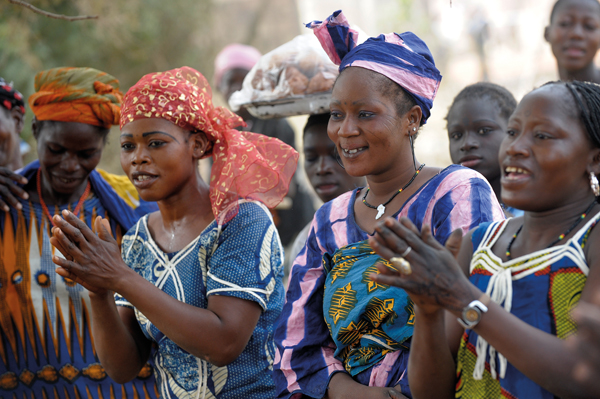
Situated in the heart of West Africa, with a diverse population and cultural mix, Burkina Faso remains committed to developing its economic potential and making sustainable use of its natural capital, despite its landlocked location and difficult security situation.
Its population, mostly young, is estimated at 23.25 million in 2023, of which 49% will be male and 51% female. The country is classified as a least developed country, with a GDP per capita of around USD 768.8, compared with USD 1,566.3 for sub-Saharan Africa as a whole. Its economic growth is mainly driven by the agricultural sector and gold mining, with local processing emerging.
Despite the efforts and progress made over the years, the incidence of poverty remains high in the country, with strong demographic pressure absorbing a significant proportion of economic growth. According to the World Bank, nearly 40% of Burkina Faso's population still lives below the poverty line. Added to this is an economic slowdown due to the security crisis, socio-political instability with two coups d'état in 2022, and the impact of climate change. The security crisis has led to the displacement of more than two million people as a result of violence by armed groups.
Like other countries on the continent, the major challenges for Burkina Faso remain security, employment - particularly for young people - the development of productive bases and resilience to disaster risks and climate change, education and training, as well as good governance and improving the quality of institutions. Reforms and adaptation measures have been deployed to considerably reduce the undesirable effects associated with these problems.
Access to, and the maintenance and continuity of, education in a difficult security environment, the deployment of a national strategy for social cohesion and programmes to manage displaced persons are all solutions currently being implemented as part of a National Action Plan for Stabilisation and Development (PA-SD). This national reference framework is structured around four fundamental pillars:
- fighting terrorism and restoring territorial integrity;
- responding to the humanitarian crisis;
- rebuilding the state and improving governance;
- working towards national reconciliation and social cohesion.
Despite the difficult environment, our players remain confident and committed to their development prospects. In the medium term, growth should be maintained. And if security conditions stabilise and the transition programme takes effect, growth could improve to 5.1% by 2025.
Luxembourg Cooperation, which has been present in Burkina Faso for almost a quarter of a century, provides technical and financial support in a number of areas, including the environment, vocational training and youth employment, education and in particular education in emergency situations, as well as digital technology and sustainable finance. Over the past two decades of partnership, Luxembourg Cooperation, through its many actions, has actively contributed to achieving the Sustainable Development Goals prioritised by Burkina Faso.
Watch the video recap of 20 years of cooperation between Luxembourg and Burkina Faso (in French).
Sources: afdb.org, unocha.org, worldbank.org
Evolution of activities in Burkina Faso (in thousand EUR)
Distribution of the 2022 disbursements by sector
All projects in Burkina Faso
-
BKF/023Support to the sustainable management of the forest resources
-
BKF/024Project for land reclamation efforts towards pastoral usage and in conservation areas
-
BKF/025Support Programme to Implementation of the Education and Training Sector Plan (PSEF)
-
BKF/026Support to the National Education and Technical and Vocational Training Policy in Burkina Faso
-
BKF/027Supporting the cadastre of Burkina Faso in the municipalities of Ouagadougou and Bobo-Dioulasso
